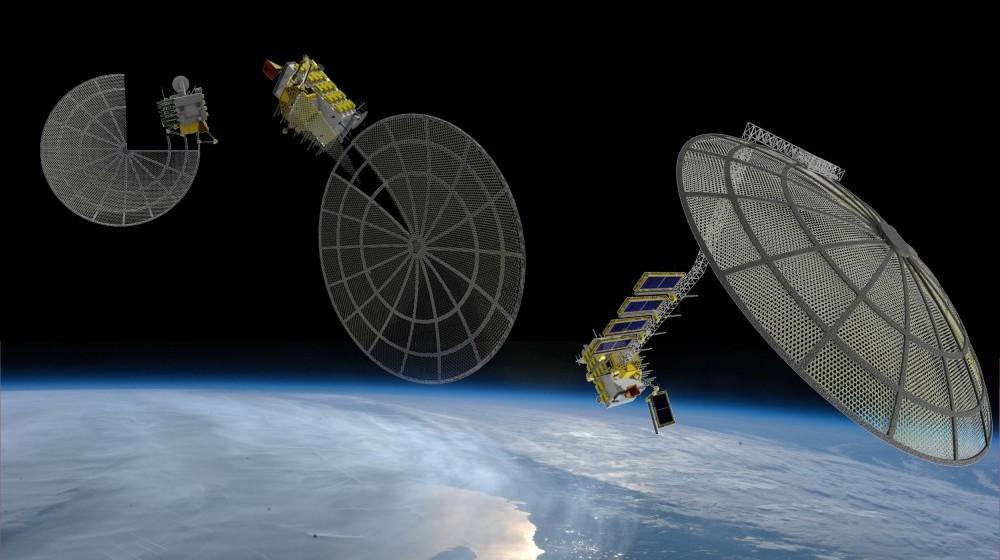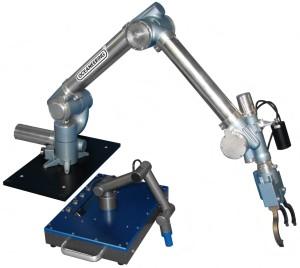 California’s space technology company Made In Space, currently preparing their second zero gravity 3D printer called the Additive Manufacturing Facility for the International Space Station, will be playing a key role in a NASA project that could completely revolutionize manufacturing in space. They will be partnering with Northrop Grumman and Oceaneering Space Systems on Archinaut, a 3D printer capable of working in the vacuum of space that will be equipped with a robotic arm. Archinaut is scheduled to be installed on an external space station pod and will be capable of in-orbit additive manufacturing, the fabrication and assembly of communications satellite reflectors or the repair on in-orbit structures and machinery.
California’s space technology company Made In Space, currently preparing their second zero gravity 3D printer called the Additive Manufacturing Facility for the International Space Station, will be playing a key role in a NASA project that could completely revolutionize manufacturing in space. They will be partnering with Northrop Grumman and Oceaneering Space Systems on Archinaut, a 3D printer capable of working in the vacuum of space that will be equipped with a robotic arm. Archinaut is scheduled to be installed on an external space station pod and will be capable of in-orbit additive manufacturing, the fabrication and assembly of communications satellite reflectors or the repair on in-orbit structures and machinery.
The two-year-long, $20 million NASA project will culminate in a live, orbital demonstration of Archinaut’s ability to create large, complex structures sometime in 2018. The project is officially known as Versatile In-Space Robotic Precision Manufacturing and Assembly System. It was selected as one of several projects chosen by NASA as part of their Tipping Points campaign, a program to fund prototypes of space technologies that could potentially lead to significant government and commercial applications. The project was originally selected back in November 2015 as one of three projects, each with a focus on the robotic manufacturing and assembly of in-orbit spacecraft and structures.
“We are attempting to change the way we build space systems. Now, we build things on the ground and launch them using fairly expensive and complicated rockets. We are seeking to create an infrastructure to build systems in space rather than launching them,” explained associate administrator for NASA’s Space Technology Mission Directorate Steve Jurcyk during a press conference at Made in Space’s office in the NASA Ames Research Park.
In-orbit manufacturing and fabrication could revolutionize the design of spacecraft and orbital technology. Engineers would no longer be required to design structures or devices that need to be capable of withstanding the force of Earth’s gravity, fit inside of a rocket being launched into orbit, or surviving the massive vibrational and acoustic forces experienced during launch. An orbital manufacturing facility would also offer NASA, and other private space companies, the option of only needing to launch basic, raw materials used for 3D printers and a selection of high-value components like sensors, electronics and batteries into orbit.
Once in space Archinaut would get to work constructing satellites or other types of spacecraft, and can be attached to a larger structure or maneuver independently. The 3D printer would start fabricating the structure in the open vacuum of space, while the robotic arm would install the non-3D printed components during the process. According to the contract with NASA, Archinaut’s orbital 3D printer will be developed by Made In Space while the manipulator arm is set to be made by Oceaneering Space Systems. Northrop Grumman was selected to provide systems engineering, control electronics, software, testing and the development of Archinaut’s ISS interface.
If the planned tests in 2018 are successful and Archinaut is proven as viable, Made In Space and Oceaneering Space Systems hope to continue the project by testing a followup model with additional robotic arms and a larger capacity 3D printer to test Archinaut’s ability to be scaled up. The eventual end result would be a version of Archinaut that would be a three-armed, orbital manufacturing robot that can maneuver around in space autonomously and attach itself to orbital structures. Archinaut could be used to add or remove external components, make repairs and upgrades and even remove and repurpose parts from decommissioned spacecraft. Archinaut could even be used to clean up space debris while not in use and either recycle it, or collect it for removal from orbit. What do you think about this latest project for NASA? Discuss in the 3D Printer with Robotic Arm for NASA forum over at 3DPB.com.
Subscribe to Our Email Newsletter
Stay up-to-date on all the latest news from the 3D printing industry and receive information and offers from third party vendors.
Print Services
Upload your 3D Models and get them printed quickly and efficiently.
You May Also Like
Consolidation in AM: How 2025 Is Shaping the Industry’s New Normal
The first half of 2025 has been marked by a clear shift in the additive manufacturing (AM) industry. Companies are no longer just focused on developing new tech by themselves....
Etsy Design Rule Change Reduces Selection of 3D Printed Goods
Online marketplace Etsy has implemented a rule change requiring all 3D printed goods on the site to be original designs. The update to the site’s Creativity Standards states, ¨Items produced using...
U.S. Congress Calls Out 3D Printing in Proposal for Commercial Reserve Manufacturing Network
Last week, the U.S. House of Representatives’ Appropriations Committee moved the FY 2026 defense bill forward to the House floor. Included in the legislation is a $131 million proposal for...
Transforming From Tourist to Native: Duro CEO Michael Corr Explains Why the Company Rebuilt its PLM Software on AI
In these early innings of the AI boom, many market analysts have expressed concern that AI spend has gotten too far ahead of the technology’s proven ability to deliver significant...



































